#advanced metering infrastructure
Explore tagged Tumblr posts
Text
U.S. Smart Meters Market: Driving Energy Efficiency and Grid Modernization
The U.S. smart meters market is undergoing a significant transformation, driven by the growing need for energy efficiency, technological advancements, and infrastructure modernization. Valued at USD 4.2 billion in 2024, the market is projected to reach USD 8.8 billion by 2032, growing at a compound annual growth rate (CAGR) of 9.8% from 2025 to 2032. This growth is fueled by increased investments…
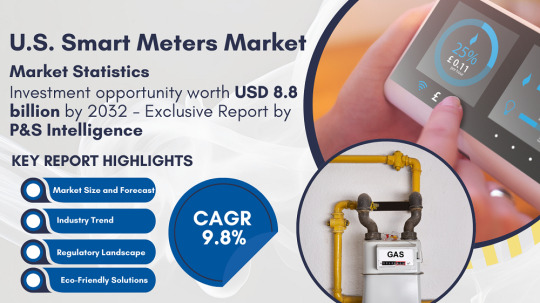
View On WordPress
#advanced metering infrastructure#AMI#automated meter reading#energy efficiency#smart grid#smart meters#utility modernization
0 notes
Text
Efficient electricity distribution is the need of the future. Read how Advanced Metering Infrastructure Service Provider can aid in fulfilling this need.
0 notes
Text
Digital Power Meter Market Trends, Key Factors, Opportunity, In-depth Insights Strategies and Huge Demand by 2032
Market Overview: The Digital Power Meter Market refers to the market for electronic devices used for measuring and monitoring electrical power consumption in various applications. Digital power meters provide accurate and real-time data on power usage, enabling efficient energy management and facilitating cost savings. These meters are widely used in residential, commercial, and industrial sectors to monitor electricity consumption and optimize energy usage.
Global Digital Power Meters Market Report Predicts Industry to Grow at 4.1% CAGR to forecast period (2023-2030).
Demand:
Energy Efficiency and Monitoring: Growing emphasis on energy conservation and cost reduction is driving the demand for digital power meters. These meters provide accurate real-time data on energy consumption, allowing businesses and individuals to monitor and manage their energy usage effectively.
Utility Modernization: Utilities are upgrading their infrastructure to smarter grids. Digital power meters enable utilities to remotely monitor energy consumption, detect outages, and manage energy distribution efficiently.
Smart Buildings: The trend toward smart buildings and home automation is fueling the demand for digital power meters. These meters are integral to building management systems, enabling remote energy monitoring, load optimization, and demand response strategies.
Renewable Energy Integration: As renewable energy sources become more prevalent, digital power meters play a critical role in tracking the energy produced and consumed. They enable effective integration of solar panels, wind turbines, and other renewable sources into the grid.
Data-Driven Insights: Businesses are seeking data-driven insights to optimize operations and reduce costs. Digital power meters provide granular data that can be used for energy audits, load profiling, and predictive maintenance.
Scope:
Industrial Applications: Digital power meters find extensive use in industries to monitor and manage energy consumption in manufacturing processes, helping industries identify energy-saving opportunities and enhance operational efficiency.
Residential Sector: As smart home technology gains popularity, digital power meters are becoming a central component of home energy management systems, allowing homeowners to monitor and control their energy usage remotely.
Commercial Buildings: Office complexes, retail spaces, and other commercial buildings are adopting digital power meters to comply with energy efficiency regulations and improve sustainability.
Utility Companies: Utility companies are deploying digital power meters for their customers to provide accurate billing based on actual consumption and enable demand-side management programs.
Opportunity:
Data Analytics and IoT Integration: The opportunity lies in enhancing digital power meters with advanced data analytics and integration with the Internet of Things (IoT). This can enable predictive maintenance, anomaly detection, and real-time energy optimization.
Demand Response Programs: Digital power meters open up opportunities for demand response programs where energy consumption can be adjusted in response to grid conditions. This creates potential revenue streams for consumers and businesses.
Energy Auditing Services: The accurate and detailed data provided by digital power meters can lead to the growth of energy auditing services. Energy consultants can analyze the data and recommend energy-saving measures to clients.
Renewable Energy Tracking Services: Businesses and homeowners with renewable energy systems may require tracking services to monitor the energy generated, consumed, and fed back into the grid. Digital power meters can offer such tracking capabilities.
Energy Management Solutions: Companies can develop comprehensive energy management solutions that integrate digital power meters with software platforms for holistic energy monitoring, analysis, and optimization.
Market Expansion: As digital power meter technology advances, there is an opportunity for market expansion into regions where energy efficiency initiatives are gaining traction.
The digital power meter market is evolving in response to increasing energy awareness, technology advancements, and changing energy landscapes. This creates opportunities for innovation and growth across various sectors and applications.
Challenges: The digital power meter market also faces certain challenges, including:
• Cost Constraints: The price of digital power metres may prevent their adoption, particularly in markets where prices are sensitive. To meet this issue, manufacturers must concentrate on cost reduction and provide competitive pricing.
• Compatibility and Interoperability: When integrating digital power metres with current energy management systems or smart grid infrastructure, interoperability problems may occur. For seamless integration and functionality, compatibility and standardisation are crucial.
• Data Security and Privacy: As sensitive energy consumption data is collected and transmitted by digital power metres, guaranteeing data security and preserving customer privacy are significant issues that need to be resolved by putting in place effective cybersecurity measures.
Overall, the digital power meter market offers significant opportunities driven by energy efficiency initiatives, smart grid deployment, and growing awareness of energy management. Addressing challenges related to cost, compatibility, and data security will be crucial for sustained market growth.
By visiting our website or contacting us directly, you can explore the availability of specific reports related to this market. These reports often require a purchase or subscription, but we provide comprehensive and in-depth information that can be valuable for businesses, investors, and individuals interested in this market.
“Remember to look for recent reports to ensure you have the most current and relevant information.”
Click Here, To Get Free Sample Report: https://stringentdatalytics.com/sample-request/digital-power-meter-market/10931/
Market Segmentations:
Global Digital Power Meter Market: By Company
• General Electric
• Toshiba
• Wasison Group Holdings
• ABB
• Eaton
• Holley Metering
• Siemens
• Itron
• Landis+Gyr
• Schneider Electric
• Honeywell
• Jiaxing Eastron Electronic Instruments
• Kamstrup
• LINYANG Energy
• Murata
• Simpson Electric
Global Digital Power Meter Market: By Type
• Single Phase
• Three Phase
Global Digital Power Meter Market: By Application
• Residential
• Commercial
• Industrial
Global Digital Power Meter Market: Regional Analysis
The global Digital Power Metre market's regional analysis sheds light on how the market has performed in various parts of the world. The research contains a market prognosis for the predicted period and is based on current and upcoming trends. The following nations are included in the regional analysis of the digital power metre market report:
North America: The North America region includes the U.S., Canada, and Mexico. The U.S. is the largest market for Digital Power Meter in this region, followed by Canada and Mexico. The market growth in this region is primarily driven by the presence of key market players and the increasing demand for the product.
Europe: The Europe region includes Germany, France, U.K., Russia, Italy, Spain, Turkey, Netherlands, Switzerland, Belgium, and Rest of Europe. Germany is the largest market for Digital Power Meter in this region, followed by the U.K. and France. The market growth in this region is driven by the increasing demand for the product in the automotive and aerospace sectors.
Asia-Pacific: The Asia-Pacific region includes Singapore, Malaysia, Australia, Thailand, Indonesia, Philippines, China, Japan, India, South Korea, and Rest of Asia-Pacific. China is the largest market for Digital Power Meter in this region, followed by Japan and India. The market growth in this region is driven by the increasing adoption of the product in various end-use industries, such as automotive, aerospace, and construction.
Middle East and Africa: The Middle East and Africa region includes Saudi Arabia, U.A.E, South Africa, Egypt, Israel, and Rest of Middle East and Africa. The market growth in this region is driven by the increasing demand for the product in the aerospace and defense sectors.
South America: The South America region includes Argentina, Brazil, and Rest of South America. Brazil is the largest market for Digital Power Meter in this region, followed by Argentina. The market growth in this region is primarily driven by the increasing demand for the product in the automotive sector.
Click Here, To Buy Report: https://stringentdatalytics.com/purchase/digital-power-meter-market/10931/?license=single
Reasons to Purchase Digital Power Meter Market Report:
Comprehensive Market Insights: Global research market reports provide a thorough and in-depth analysis of a specific market or industry. They offer valuable insights into market size, growth potential, trends, challenges, and opportunities, helping businesses make informed decisions and formulate effective strategies.
Market Analysis and Forecasts: These reports provide detailed analysis and forecasts of market trends, growth rates, and future market scenarios. They help businesses understand the current market landscape and anticipate future market developments, enabling them to plan and allocate resources accordingly.
Competitive Intelligence: Global research market reports provide a competitive landscape analysis, including information about key market players, their market share, strategies, and product portfolios. This information helps businesses understand their competitors' strengths and weaknesses, identify market gaps, and develop strategies to gain a competitive advantage.
Industry Trends and Insights: These reports offer insights into industry-specific trends, emerging technologies, and regulatory frameworks. Understanding industry dynamics and staying updated on the latest trends can help businesses identify growth opportunities and stay ahead in a competitive market.
Investment and Expansion Opportunities: Global research market reports provide information about investment opportunities, potential markets for expansion, and emerging growth areas. These reports help businesses identify untapped markets, assess the feasibility of investments, and make informed decisions regarding expansion strategies.
Risk Mitigation: Market reports provide risk assessment and mitigation strategies. By analyzing market dynamics, potential challenges, and regulatory frameworks, businesses can proactively identify risks and develop strategies to mitigate them, ensuring better risk management and decision-making.
Cost and Time Efficiency: Conducting comprehensive market research independently can be time-consuming and expensive. Purchasing a global research market report provides a cost-effective and time-efficient solution, saving businesses valuable resources while still gaining access to reliable and detailed market information.
Decision-Making Support: Global research market reports serve as decision-making tools by providing data-driven insights and analysis. Businesses can rely on these reports to support their decision-making process, validate assumptions, and evaluate the potential outcomes of different strategies.
In general, market research studies offer companies and organisations useful data that can aid in making decisions and maintaining competitiveness in their industry. They can offer a strong basis for decision-making, strategy formulation, and company planning.
About US:
Stringent Datalytics offers both custom and syndicated market research reports. Custom market research reports are tailored to a specific client's needs and requirements. These reports provide unique insights into a particular industry or market segment and can help businesses make informed decisions about their strategies and operations.
Syndicated market research reports, on the other hand, are pre-existing reports that are available for purchase by multiple clients. These reports are often produced on a regular basis, such as annually or quarterly, and cover a broad range of industries and market segments. Syndicated reports provide clients with insights into industry trends, market sizes, and competitive landscapes. By offering both custom and syndicated reports, Stringent Datalytics can provide clients with a range of market research solutions that can be customized to their specific needs
Contact US:
Stringent Datalytics
Contact No - +1 346 666 6655
Email Id - [email protected]
Web - https://stringentdatalytics.com/
#Digital Power Meter#Energy Monitoring#Smart Metering#Energy Efficiency#Real-time Data#Energy Consumption Tracking#Smart Grid#IoT Integration#Energy Management#Advanced Metering Infrastructure#Smart Home#Data Analytics#Energy Savings#Electricity Usage Monitoring#Demand-side Management#Renewable Energy Integration#Smart Building#Energy Analytics#Power Consumption Measurement#Sustainable Energy#Smart Energy Solutions.
0 notes
Text
https://www.whatech.com/og/markets-research/energy/765455-advanced-metering-infrastructure-ami-market-described-in-a-new-report#google_vignette
Advanced metering infrastructure (AMI) is a communication architecture that allows a smart utility meter with an IP address to communicate with a utility provider in an automatic, two-way manner. AMI is seen as an important part of any smart grid initiative.
0 notes
Text

1,600-Year-Old Roman Luxury Villa Complex With Fish Pond Unearthed in Turkey
A newly uncovered 1,600-year-old Roman villa in the ancient city of Tripolis dazzles with its colorful frescoes, sophisticated architecture, and a rare freshwater fish pond — a symbol of elite Roman luxury.
Archaeologists working in the ancient city of Tripolis, located in the Buldan district of Denizli, western Türkiye have unearthed an exceptionally well-preserved Roman-era villa dating back to the 4th century CE. Spanning 1,500 square meters, the villa includes elaborately painted walls, two fountains, a cistern, multiple reception halls, and a rare 40-square-meter fish pond, making it one of the most remarkable finds of the 2025 excavation season.
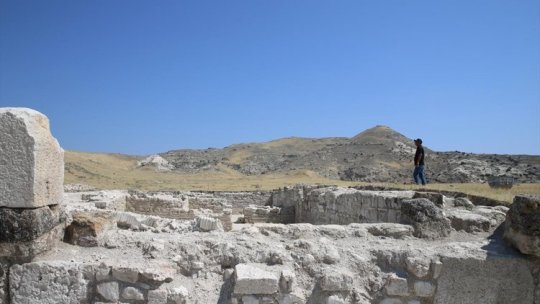
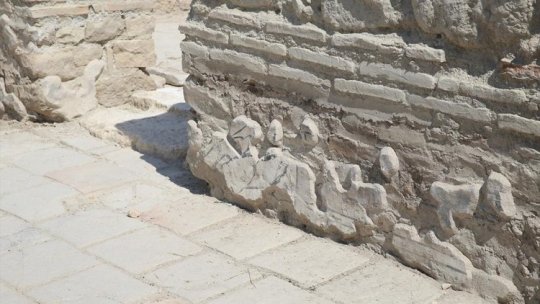

A Rare Glimpse into Roman Luxury
Excavations led by Professor Bahadır Duman of Pamukkale University’s Archaeology Department have revealed that the villa, located near the Büyük Menderes River, was likely a prestigious residence for the elite. Its architectural design includes four rooms, two large halls, a columned gallery, and a large inner courtyard.
What sets this discovery apart is the decorative fish pond—a feature seldom found in inland Roman sites. The pond’s inner walls are lined with baked-clay water pipes and include niches for fish to take shelter from sunlight or predators. According to Duman, fish such as carp, catfish, and eel were likely raised in the pond and served to guests during lavish banquets.
“Fish ponds during the Roman period were not only for consumption but also status symbols,” said Prof. Duman. “This architectural sophistication indicates that the villa’s owners were affluent and influential.”

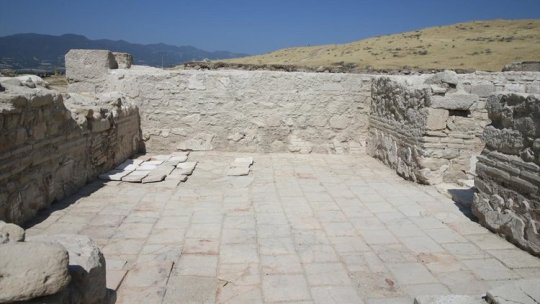
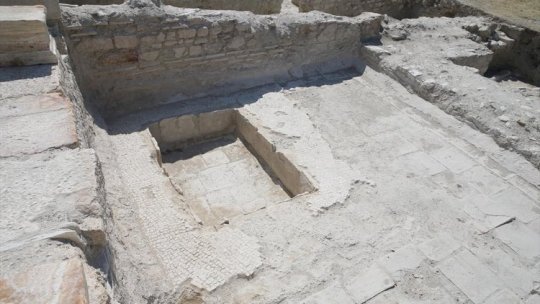
Walls That Speak History
The villa’s interior walls are adorned with vivid frescoes painted in a rich palette—yellow, red, blue, and brown—featuring plant motifs and architectural patterns. These paintings, preserved for over 16 centuries, offer rare insights into the artistic tastes and cultural sophistication of late Roman Anatolia.
Tripolis: A Window to Ancient Western Anatolia
Situated near the modern-day town of Yenicekent, Tripolis was a thriving commercial and administrative center during the Hellenistic, Roman, and Byzantine periods. It is considered one of the best-preserved ancient cities in Western Anatolia.
Over 13 years of excavation have yielded:
A 2,000-year-old villa with 12 mosaic-decorated rooms
A 1,500-year-old church
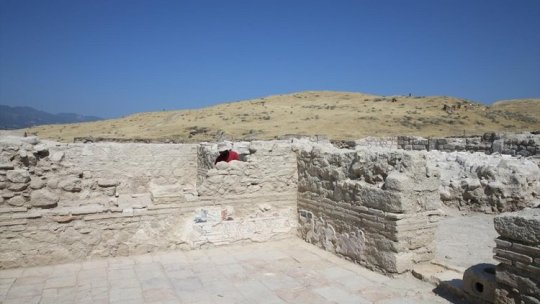
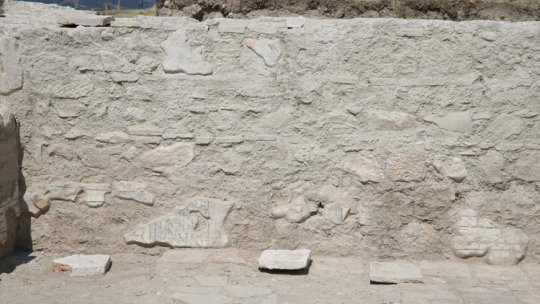
Roman-era grain silos, marketplaces, and workshops
Tripolis once held strategic importance due to its location on trade routes connecting major cities such as Laodicea, Hierapolis, and Ephesus. Archaeological evidence points to a prosperous urban culture, with citizens enjoying advanced infrastructure and artistic achievements.
A Heritage Preserved for the Future
The excavation is part of Türkiye’s “Heritage for the Future” initiative, supported by the Ministry of Culture and Tourism. A team of 40 archaeologists and researchers is working year-round to restore and protect the ancient city, aiming to open larger areas to tourism and academic study.
By Oguz Kayra.
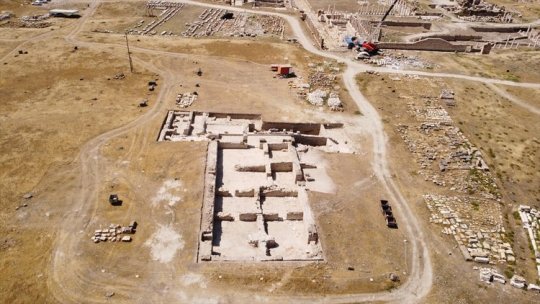
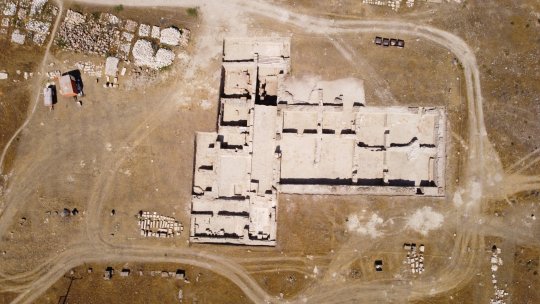
#1600-Year-Old Roman Luxury Villa Complex With Fish Pond Unearthed in Turkey#ancient city of Tripolis#Roman-era villa#ancient artifacts#archeology#history#history news#ancient history#ancient culture#ancient civilizations#roman history#roman empire
45 notes
·
View notes
Text
magic system dr | aura reading & detection tech
------------------------------------------------------------------------------
date: june 25 2025. started: 9:21 pm ended: 9:56
------------------------------------------------------------------------------





✧˖*°࿐aura reading technology
the scientific infrastructure supports magic classification, safety, and research.
modern societies with widespread magic have developed advanced systems to study, regulate, and interpret aura phenomena. aura-reading technology is not just for identification — it's vital for combat training, job placement, civilian safety, and national security.
*ೃ༄spectral analyzers
“The soul under a microscope.”
ꪆৎ 𓂃 › these devices isolate and identify aura wavelengths, translating visible or invisible magical emissions into a precise color-tone signature. ꪆৎ 𓂃 › they operate similarly to full-body scanners or advanced MRIs, using manadetection lenses, ley resonance chambers, or crystal refraction beds. ꪆৎ 𓂃 › spectral analyzers are capable of reading even dual, tri, or shifting auras by separating tone overlays using multidimensional spectrum mapping. ꪆৎ 𓂃 › advanced versions are portable (used in field operations), while institutional models are building-sized and used for research or high-level diagnostics. ꪆৎ 𓂃 › some elite military models can even detect hidden aura traits, such as latent affinities or suppressed trauma-based mutations.
*ೃ༄power meters
“Your wattage, your weapon.”
ꪆৎ 𓂃 › measure a magic user’s raw mana output in Standardized Power Units (SPU), which combine raw aura density, spell amplification rate, and burst capacity. ꪆৎ 𓂃 › readings are divided into resting power, surge power, and drain thresholds (the point at which magic use becomes dangerous to health). ꪆৎ 𓂃 › power meters are used in everything from combat simulations to spell license tests, and job qualification boards. ꪆৎ 𓂃 › some models are worn like bracelets or rings and update in real-time for field operatives — especially those with fluctuating or trauma-triggered power spikes. ꪆৎ 𓂃 › red zone readings (SPU thresholds exceeding the legal maximum) are automatically flagged in certain jurisdictions, especially near urban ley conduits.
*ೃ༄control assessors
“How steady is your hand?”
𓂃 ࣪˖ ִֶָꪆৎ these stations test magical finesse, response time, and multitarget accuracy using virtual or physical challenges. 𓂃 ࣪˖ ִֶָꪆৎ think magical “driving tests”: users must perform spells within specific parameters, like conjuring a flame within a 5 cm radius without burning a dummy. დ࿐ ˗ˋ includes tasks such as: ꪆৎ 𓂃 › threadweaving: threading a spell through moving rings. ꪆৎ 𓂃 › spell dissection: safely dismantling a layered enchantment. ꪆৎ 𓂃 › simulated crisis response: cast multiple spells under time pressure without collateral damage. 𓂃 ࣪˖ ִֶָꪆৎ users receive a control class rating (1–7) after passing or failing various difficulty tiers. 𓂃 ࣪˖ ִֶָꪆৎ some tests are environment-specific (underwater, high-stress, low-mana zones), simulating real combat or unstable fieldwork.
*ೃ༄stability monitors
“The difference between control and collapse.”
𓂃 ࣪˖ ִֶָꪆৎ constantly assess whether a magic user’s aura is stable or experiencing fluctuations, interference, or degradation. 𓂃 ࣪˖ ִֶָꪆৎ used in hospitals, training facilities, and urban centers with heavy mana saturation to prevent magical breakdowns or mass surges. დ࿐ ˗ˋ indicators include: ꪆৎ 𓂃 › mana drift: uncontrolled leakage of aura into the environment. ꪆৎ 𓂃 › spell corruption: spells twist mid-cast due to emotional or mental instability. ꪆৎ 𓂃 › overcast markers: dangerously high mana buildup. 𓂃 ࣪˖ ִֶָꪆৎ worn in patches, chest straps, or neural clips. readings flash yellow (unstable), orange (critical), or red (collapse imminent). 𓂃 ࣪˖ ִֶָꪆৎ especially important for young aura users, those with trauma-affected tones, or S-Class individuals who risk devastating outbursts.





✧˖*°࿐legal magical monitoring
the framework that balances personal freedom, national safety, and ethical boundaries in a magic-using world.
as magic became widespread and powerful, governments developed international and regional laws to register, track, and regulate aura users. this was partly for security — and partly due to the devastating history of magic-related disasters.
*ೃ༄registration requirements
“Your name. Your aura. Your responsibility.”
𓂃 ࣪˖ ִֶָꪆৎ all individuals with detectable aura activity must register by age 18 with their local Magical Affairs Office (MAO) or its equivalent. დ࿐ ˗ˋ registration includes: ꪆৎ 𓂃 › aura color and tone ꪆৎ 𓂃 › power and control class ꪆৎ 𓂃 › spell affinities ꪆৎ 𓂃 › health risk ratings 𓂃 ࣪˖ ִֶָꪆৎ refusal to register is considered a class III infraction and can result in suppression order mandates, travel restrictions, or even forced tagging. 𓂃 ࣪˖ ִֶָꪆৎ some nations have voluntary pre-18 programs, where prodigies (especially A-Class+ candidates) are fast-tracked into protected training zones.
*ೃ༄power ratings
“You are more than your number — but your number still matters.”
𓂃 ࣪˖ ִֶָꪆৎ all registered aura users receive an official Power Rating ID, required for employment, training, or casting within populated zones. დ࿐ ˗ˋ this rating includes: ꪆৎ 𓂃 › classification (e.g., B4 – Inferno Power, Skilled Control) ꪆৎ 𓂃 › special endorsements (healing license, combat license, ritualist permit) ꪆৎ 𓂃 › restrictions (e.g., banned from casting in schools, cannot cast during full moons) 𓂃 ࣪˖ ִֶָꪆৎ used by employers, guilds, security firms, and public transport hubs to determine magical risk and access levels. 𓂃 ࣪˖ ִֶָꪆৎ updated every 2–5 years, or after major incidents/changes (trauma, mutation, skill upgrade).
*ೃ༄monitoring devices
“Magical privacy ends where public safety begins.”
𓂃 ࣪˖ ִֶָꪆৎ devices that track aura emissions, spellcasting frequency, and location-based surges in high-risk areas (airports, courts, leyline hubs). 𓂃 ࣪˖ ִֶָꪆৎ usually passive — detect, log, and store information without interrupting. 𓂃 ࣪˖ ִֶָꪆৎ some facilities require mandatory suppressor tags or casting inhibitors for A-S class individuals or those with unstable readings. 𓂃 ࣪˖ ִֶָꪆৎ misuse of magical energy in monitored zones leads to auto-alerts sent to Magical Enforcement Units. დ࿐ ˗ˋ technology is constantly evolving to distinguish between: ꪆৎ 𓂃 › intentional casting ꪆৎ 𓂃 › emotional surges ꪆৎ 𓂃 › residual aura bleed ꪆৎ 𓂃 › external possession or corruption
*ೃ༄suppression fields
“Magic stops here.”
𓂃 ࣪˖ ִֶָꪆৎ areas saturated with aura-dampening energy that reduces or nullifies magic. 𓂃 ࣪˖ ִֶָꪆৎ can be natural (leyline dead zones) or artificial (generated via runic engines, sound-frequency disruptors, or ancient sigils). დ࿐ ˗ˋ found in: ꪆৎ 𓂃 › detention centers ꪆৎ 𓂃 › government buildings ꪆৎ 𓂃 › high-security academies ꪆৎ 𓂃 › hospitals treating mana-overload დ࿐ ˗ˋ not all suppression fields are equal: ꪆৎ 𓂃 › level 1: general dampening (reduces effectiveness by 50–60%) ꪆৎ 𓂃 › level 2: emergency shutdown (negates nearly all external spells) ꪆৎ 𓂃 › level 3: total nullification, including passive aura effects (dangerous for some users — can cause mana suffocation or backlash) 𓂃 ࣪˖ ִֶָꪆৎ use of suppression fields on minors or civilians without consent is a hot legal issue, with many human rights groups protesting over potential abuse.





*ೃ༄social reactions & cultural influence
𓂃 ࣪˖ ִֶָꪆৎ aura scanners are sometimes feared by rural or traditionalist communities who see them as dehumanizing or a sign of overreach.
𓂃 ࣪˖ ִֶָꪆৎ black markets exist for aura scramblers, which temporarily block readings from scanners — often used by criminals or anti-registration rebels.
𓂃 ࣪˖ ִֶָꪆৎ powerful figures with S-Class readings may be publicly known, heavily guarded, or politically untouchable — creating a mystique or fear around them.
𓂃 ࣪˖ ִֶָꪆৎ some schools and religious orders teach non-digital aura reading, such as aura empathy, color-meditation, or song-based resonance testing.
#reyaint#reality shifting#shiftblr#reality shifter#shifting#shifting community#shifting motivation#anti shifters dni#dr scrapbook#dr world#boarding school dr#magic system dr
9 notes
·
View notes
Link
A new U.S.-India satellite called NISAR (NASA-ISRO Synthetic Aperture Radar) will provide high-resolution data enabling scientists to comprehensively monitor the planet’s land and ice surfaces like never before, building a detailed record of how they shift over time. Hailed as a critical part of a pioneering year for U.S.-India civil space cooperation by President Trump and Prime Minister Modi during their visit in Washington in February, the NISAR launch will advance U.S.-India cooperation and benefit the U.S. in the areas of disaster response and agriculture. As the first joint satellite mission between NASA and the Indian Space Research Organisation (ISRO), NISAR marks a new chapter in the growing collaboration between the two space agencies. Years in the making, the launch of NISAR builds on a strong heritage of successful programs, including Chandrayaan-1 and the recent Axiom Mission 4, which saw ISRO and NASA astronauts living and working together aboard the International Space Station for the first time.The information NISAR provides will help decision-makers, communities, and scientists monitor agricultural fields, refine understanding of natural hazards such as landslides and earthquakes, and help teams prepare for and respond to disasters like hurricanes, floods, and volcanic eruptions. The satellite will also provide key global observations of changes to ice sheets, glaciers, and permafrost, as well as forests and wetlands.The NISAR mission is slated to launch no earlier than July 30 from Satish Dhawan Space Centre on India’s southeastern coast aboard an ISRO Geosynchronous Satellite Launch Vehicle.Here are five things to know about NISAR:1. The NISAR satellite will provide a 3D view of Earth’s land and ice.Two synthetic aperture radars (SARs) aboard NISAR will detect changes in the planet’s surface down to fractions of an inch. The spacecraft will bounce microwave signals off Earth’s surface and receive the return signals on a radar antenna reflector measuring 39 feet (12 meters) across. The satellite’s ability to “see” through clouds and light rain, day and night, will enable data users to continuously monitor earthquake- and landslide-prone areas and determine how quickly glaciers and ice sheets are changing. It also will offer unprecedented coverage of Antarctica, information that will help with studying how the continent’s ice sheet changes over time. Get the NISAR press kit 2. Data from NISAR will provide critical insights to help governments and decision-makers plan for natural and human-caused hazards.Earthquakes, volcanoes, and aging infrastructure can pose risks to lives and property. Able to see subtle changes in Earth’s surface, NISAR can help with hazard-monitoring efforts and potentially give decision-makers more time to prepare for a possible disaster. For earthquakes, NISAR will provide insights into which parts of a fault slowly move without producing quakes and which are locked together and could potentially slip. The satellite will be able to monitor the area around thousands of volcanoes, detecting land movement that could be a precursor to an eruption. When it comes to infrastructure such as levees, aqueducts, and dams, NISAR data collected over time can help managers detect if nearby land motion could jeopardize key structures, and then assess the integrity of those facilities.3. The most advanced radar system ever launched as part of a NASA or ISRO mission, NISAR will generate more data on a daily basis than any previous Earth satellite from either agency.About the length of a pickup truck, NISAR’s main body contains a dual-radar payload — an L-band system with a 10-inch (25-centimeter) wavelength and an S-band system with a 4-inch (10-centimeter) wavelength. Each system is sensitive to land and ice features of different sizes and specializes in detecting certain attributes, such as moisture content, surface roughness, and motion. By including both radars on one spacecraft — a first — NISAR will be more capable than previous SAR missions. These two radars, one from NASA and one from ISRO, and the data they will produce, exemplify how collaboration between spacefaring allies can achieve more than either would alone.The radars will generate about 80 terabytes of data products per day over the course of NISAR’s prime mission. That’s roughly enough data to fill about 150 512-gigabyte hard drives each day. The information will be processed, stored, and distributed via the cloud — and accessible to all. This artist's concept depicts the NISAR satellite in orbit over central and Northern California. Short for NASA-ISRO Synthetic Aperture Radar, NISAR is a joint mission of NASA and ISRO (Indian Space Research Organisation). Credit: NASA/JPL-Caltech 4. The NISAR mission will help monitor ecosystems around the world.The mission���s two radars will monitor Earth’s land and ice-covered surfaces twice every 12 days. Their near-comprehensive coverage will include areas not previously covered by other Earth-observing radar satellites with such frequency. The NISAR satellite’s L-band radar penetrates deep into forest canopies, providing insights into forest structure, while the S-band radar is ideal for monitoring crops. The NISAR data will help researchers assess how forests, wetlands, agricultural areas, and permafrost change over time.5. The NISAR mission marks the first collaboration between NASA and ISRO on a project of this scale and marks the next step in a long line of Earth-observing SAR missions.The NISAR satellite features components developed on opposite sides of the planet by engineers from ISRO and NASA’s Jet Propulsion Laboratory working together. The S-band radar was built at ISRO’s Space Applications Centre in Ahmedabad, while JPL built the L-band radar in Southern California. After engineers from JPL and ISRO integrated NISAR’s instruments with a modified ISRO I3K spacecraft bus and tested the satellite, ISRO transported NISAR to Satish Dhawan Space Centre in May 2025 to prepare it for launch.The SAR technique was invented in the U.S. in 1952 and now countries around the globe have SAR satellites for a variety of missions. NASA first used the technique with a space-based satellite in 1978 on the ocean-observing Seasat, which included the first spaceborne SAR instrument for scientific observations. In 2012, ISRO began launching SAR missions starting with Radar Imaging Satellite (RISAT-1), followed by RISAT-1A in 2022, to support a wide range of applications in India.More About NISARManaged by Caltech in Pasadena, JPL leads the U.S. component of the project and provided the L-band SAR. JPL also provided the radar reflector antenna, the deployable boom, a high-rate communication subsystem for science data, GPS receivers, a solid-state recorder, and payload data subsystem. NASA’s Goddard Space Flight Center manages the Near Space Network, which will receive NISAR’s L-band data.The ISRO Space Applications Centre is providing the mission’s S-band SAR. The U R Rao Satellite Centre is providing the spacecraft bus. The rocket is from Vikram Sarabhai Space Centre, launch services are through Satish Dhawan Space Centre, and satellite mission operations are by the ISRO Telemetry Tracking and Command Network. The National Remote Sensing Centre is responsible for S-band data reception, operational products generation, and dissemination.To learn more about NISAR, visit:https://nisar.jpl.nasa.gov/ How New NASA, India Satellite NISAR Will See Earth Powerful New US-Indian Satellite Will Track Earth’s Changing Surface NASA-ISRO Radar Mission to Provide Dynamic View of Forests, Wetlands NASA-ISRO Mission Will Map Farmland From Planting to Harvest
3 notes
·
View notes
Text
On October 10, 2018, Tyndall Air Force Base on the Gulf of Mexico—a pillar of American air superiority—found itself under aerial attack. Hurricane Michael, first spotted as a Category 2 storm off the Florida coast, unexpectedly hulked up to a Category 5. Sustained winds of 155 miles per hour whipped into the base, flinging power poles, flipping F-22s, and totaling more than 200 buildings. The sole saving grace: Despite sitting on a peninsula, Tyndall avoided flood damage. Michael’s 9-to-14-foot storm surge swamped other parts of Florida. Tyndall’s main defense was luck.
That $5 billion disaster at Tyndall was just one of a mounting number of extreme-weather events that convinced the US Department of Defense that it needed new ideas to protect the 1,700 coastal bases it’s responsible for globally. As hurricanes Helene and Milton have just shown, beachfront residents face compounding threats from climate change, and the Pentagon is no exception. Rising oceans are chewing away the shore. Stronger storms are more capable of flooding land.
In response, Tyndall will later this month test a new way to protect shorelines from intensified waves and storm surges: a prototype artificial reef, designed by a team led by Rutgers University scientists. The 50-meter-wide array, made up of three chevron-shaped structures each weighing about 46,000 pounds, can take 70 percent of the oomph out of waves, according to tests. But this isn’t your grandaddy’s seawall. It’s specifically designed to be colonized by oysters, some of nature’s most effective wave-killers.
If researchers can optimize these creatures to work in tandem with new artificial structures placed at sea, they believe the resulting barriers can take 90 percent of the energy out of waves. David Bushek, who directs the Haskin Shellfish Research Laboratory at Rutgers, swears he’s not hoping for a megastorm to come and show what his team’s unit is made of. But he’s not not hoping for one. “Models are always imperfect. They’re always a replica of something,” he says. “They’re not the real thing.”
The project is one of three being developed under a $67.6 million program launched by the US government’s Defense Advanced Research Projects Agency, or Darpa. Cheekily called Reefense, the initiative is the Pentagon’s effort to test if “hybrid” reefs, combining manmade structures with oysters or corals, can perform as well as a good ol’ seawall. Darpa chose three research teams, all led by US universities, in 2022. After two years of intensive research and development, their prototypes are starting to go into the water, with Rutgers’ first up.
Today, the Pentagon protects its coastal assets much as civilians do: by hardening them. Common approaches involve armoring the shore with retaining walls or arranging heavy objects, like rocks or concrete blocks, in long rows. But hardscape structures come with tradeoffs. They deflect rather than absorb wave energy, so protecting one’s own shoreline means exposing someone else’s. They’re also static: As sea levels rise and storms get stronger, it’s getting easier for water to surmount these structures. This wears them down faster and demands constant, expensive repairs.
In recent decades, a new idea has emerged: using nature as infrastructure. Restoring coastal habitats like marshes and mangroves, it turns out, helps hold off waves and storms. “Instead of armoring, you’re using nature’s natural capacity to absorb wave energy,” says Donna Marie Bilkovic, a professor at the Virginia Institute for Marine Science. Darpa is particularly interested in two creatures whose numbers have been decimated by humans but which are terrific wave-breakers when allowed to thrive: oysters and corals.
Oysters are effective wave-killers because of how they grow. The bivalves pile onto each other in large, sturdy mounds. The resulting structure, unlike a smooth seawall, is replete with nooks, crannies, and convolutions. When a wave strikes, its energy gets diffused into these gaps, and further spent on the jagged, complex surfaces of the oysters. Also unlike a seawall, an oyster wall can grow. Oysters have been shown to be capable of building vertically at a rate that matches sea-level rise—which suggests they’ll retain some protective value against higher tides and stronger storms.
Today hundreds of human-tended oyster reefs, particularly on America’s Atlantic coast, use these principles to protect the shore. They take diverse approaches; some look much like natural reefs, while others have an artificial component. Some cultivate oysters for food, with coastal protection a nice co-benefit; others are built specifically to preserve shorelines. What’s missing amid all this experimentation, says Bilkovic, is systematic performance data—the kind that could validate which approaches are most effective and cost-effective. “Right now the innovation is outpacing the science,” she says. “We need to have some type of systematic monitoring of projects, so we can better understand where the techniques work the best. There just isn’t funding, frankly.”
Rather than wait for the data needed to engineer the perfect reef, Darpa wants to rapidly innovate them through a burst of R&D. Reefense has given awardees five years to deploy hybrid reefs that take up to 90 percent of the energy out of waves, without costing significantly more than traditional solutions. The manmade component should block waves immediately. But it should be quickly enhanced by organisms that build, in months or years, a living structure that would take nature decades.
The Rutgers team has built its prototype out of 788 interlocked concrete modules, each 2 feet wide and ranging in height from 1 to 2 feet tall. They have a scalloped appearance, with shelves jutting in all directions. Internally, all these shelves are connected by holes.
What this means is that when a wave strikes this structure, it smashes into the internal geometry, swirls around, and exits with less energy. This effect alone weakens the wave by 70 percent, according to the US Army Corps of Engineers, which tested a scale model in a wave simulator in Mississippi. But the effect should only improve as oysters colonize the structure. Bushek and his team have tried to design the shelves with the right hardness, texture, and shading to entice them.
But the reef’s value would be diminished if, say, disease were to wipe the mollusks out. This is why Darpa has tasked Rutgers with also engineering oysters resistant to dermo, a protozoan that’s dogged Atlantic oysters for decades. Darpa prohibited them using genetic-modification techniques. But thanks to recent advances in genomics, the Rutgers team can rapidly identify individual oysters with disease-resistant traits. It exposes these oysters to dermo in a lab, and crossbreeds the survivors, producing hardier mollusks. Traditionally it takes about three years to breed a generation of oysters for better disease resistance; Bushek says his team has done it in one.
Oysters may suit the DoD’s needs in temperate waters, but for bases in tropical climates, it’s coral that builds the best seawalls. Hawaii, for instance, enjoys the protection of “fringing” coral reefs that extend offshore for hundreds of yards in a gentle slope along the seabed. The colossal, complex, and porous character of this surface exhausts wave energy over long distances, says Ben Jones, an oceanographer for the Applied Research Laboratory at the University of Hawaii—and head of the university’s Reefense project. He said it’s not unusual to see ocean swells of 6 to 8 feet way offshore, while the water at the seashore laps gently.
Inspired by this effect, Jones and a team of researchers are designing an array that they’ll deploy near a US Marine Corps base in Oahu whose shoreline is rapidly receding. While the final design isn’t set yet, the broad strokes are: It will feature two 50-meter-wide barriers laid in rows, backed by 20 pyramid-like obstacles. All of these are hollow, thin-walled structures with sloping profiles and lots of big holes. Waves that crash into them will lose energy by crawling up the sides, but two design aspects of the structure—the width of the holes and the thinness of the walls—will generate turbulence in the water, causing it to spin off more energy as heat.
In the team’s full vision, the units are bolstered by about a thousand small coral colonies. Jones’ group plans to cover the structures with concrete modules that are about 20 inches in diameter. These have grooves and crevices that offer perfect shelters for coral larvae. The team will initially implant them with lab-bred coral. But they’re also experimenting with enticements, like light and sound, that help attract coral larvae from the wild—the better to build a wall that nature, not the Pentagon, will tend.
A third Reefense team, led by scientists at the University of Miami, takes its inspiration from a different sort of coral. Its design has a three-tiered structure. The foundation is made of long, hexagonal logs punctured with large holes; atop it is a dense layer with smaller holes—“imagine a sponge made of concrete,” says Andrew Baker, director of the university’s Coral Reef Futures Lab and the Reefense team lead.
The team thinks these artificial components will soak up plenty of wave energy—but it’s a crest of elkhorn coral at the top that will finish the job. Native to Florida, the Bahamas, and the Caribbean, elkhorn like to build dense reefs in shallow-water areas with high-intensity waves. They don’t mind getting whacked by water because it helps them harvest food; this whacking keeps wave energy from getting to shore.
Disease has ravaged Florida’s elkhorn populations in recent decades, and now ocean heat waves are dealing further damage. But their critical condition has also motivated policymakers to pursue options to save this iconic state species—including Baker’s, which is to develop an elkhorn more rugged against disease, higher temperatures, and nastier waves. Under Reefense, Baker says, his lab has developed elkhorn with 1.5 to 2 degrees Celsius more heat tolerance than their ancestors. They also claim to have boosted the heat thresholds of symbiotic algae—an existentially important occupant of any healthy reef—and cross-bred local elkhorn with those from Honduras, where reefs have mysteriously withstood scorching waters.
An unexpected permitting issue, though, will force the Miami team to exit Reefense in 2025, without building the test unit it hoped to deploy near a Florida naval base. The federal permitting authority wanted a pot of money set aside to uninstall the structure if needed; Darpa felt it couldn’t do that in a timely way, according to Baker. (Darpa told WIRED every Reefense project has unique permitting challenges, so the Miami team’s fate doesn’t necessarily speak to anything broader. Representatives for the other two Reefense projects said Baker’s issue hasn’t come up for them.)
Though his team’s work with Reefense is coming to a premature end, Baker says, he’s confident their innovations will get deployed elsewhere. He’s been working with Key Biscayne, an island village near Miami whose shorelines have been chewed up by storms. Roland Samimy, the village’s chief resilience and sustainability officer, says they spend millions of dollars every few years importing sand for their rapidly receding beaches. He’s eager to see if a hybrid structure, like the University of Miami design, could offer protection at far lower cost. “People are realizing their manmade structures aren’t as resilient as nature is,” he says.
By no means is Darpa the only one experimenting in these areas. Around the world, there are efforts tackling various pieces of the puzzle, like breeding coral for greater heat resistance, or combining coral and oysters with artificial reefs, or designing low-carbon concrete that makes building these structures less environmentally damaging. Bilkovic, of the Virginia Institute for Marine Science, says Reefense will be a success if it demonstrates better ways of doing things than the prevailing methods—and has the data to back this up. “I’m looking forward to seeing what their findings are,” she says. “They’re systematically assessing the effectiveness of the project. Those lessons learned can be translated to other areas, and if the techniques are effective and work well, they can easily be translated to other regions.”
As for Darpa, though the Reefense prototypes are just starting to go in the water, the work is just beginning. All of these first-generation units will be scrutinized—both by the research teams and independent government auditors—to see whether their real-world performance matches what was in the models. Reefense is scheduled to conclude with a final report to the DoD in 2027. It won’t have a “winner” per se; as the Pentagon has bases around the world, it’s likely these three projects will all produce learnings that are relevant elsewhere.
Although their client has the largest military budget in the world, the three Reefense teams have been asked to keep an eye on the economics. Darpa has asked that project costs “not greatly exceed” those of conventional solutions, and tasked government monitors with checking the teams’ math. Catherine Campbell, Reefense’s program manager at Darpa, says affordability doesn’t just make it more likely the Pentagon will employ the technology—but that civilians can, too.
“This isn’t something bespoke for the military … we need to be in line with those kinds of cost metrics [in the civilian sector],” Campbell said in an email. “And that gives it potential for commercialization.”
9 notes
·
View notes
Text
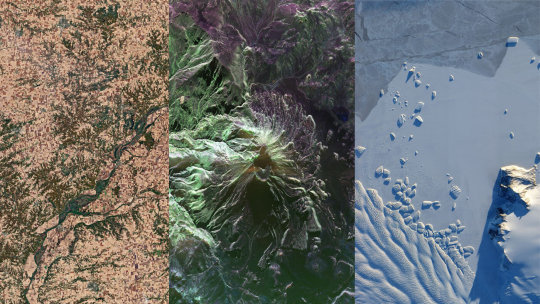
Five things to know about powerful new U.S.–India satellite, NISAR
A new U.S.–India satellite called NISAR (NASA-ISRO Synthetic Aperture Radar) will provide high-resolution data enabling scientists to comprehensively monitor the planet's land and ice surfaces like never before, building a detailed record of how they shift over time.
Hailed as a critical part of a pioneering year for U.S.–India civil space cooperation by President Trump and Prime Minister Modi during their visit in Washington in February, the NISAR launch will advance U.S.–India cooperation and benefit the U.S. in the areas of disaster response and agriculture.
As the first joint satellite mission between NASA and the Indian Space Research Organization (ISRO), NISAR marks a new chapter in the growing collaboration between the two space agencies. Years in the making, the launch of NISAR builds on a strong heritage of successful programs, including Chandrayaan-1 and the recent Axiom Mission 4, which saw ISRO and NASA astronauts living and working together aboard the International Space Station for the first time.
The information NISAR provides will help decision-makers, communities, and scientists monitor agricultural fields, refine our understanding of natural hazards such as landslides and earthquakes, and help teams prepare for and respond to disasters like hurricanes, floods, and volcanic eruptions. The satellite will also provide key global observations of changes to ice sheets, glaciers, and permafrost, as well as forests and wetlands.
The NISAR mission is slated to launch no earlier than July 30 from Satish Dhawan Space Center on India's southeastern coast aboard an ISRO Geosynchronous Satellite Launch Vehicle.
Here are five things to know about NISAR:
1. The NISAR satellite will provide a 3D view of Earth's land and ice.
Two synthetic aperture radars (SARS) aboard NISAR will detect changes in the planet's surface down to fractions of an inch. The spacecraft will bounce microwave signals off Earth's surface and receive the return signals on a radar antenna reflector measuring 39 feet (12 meters) across. The satellite's ability to "see" through clouds and light rain, day and night, will enable data users to continuously monitor earthquake- and landslide-prone areas and determine how quickly glaciers and ice sheets are changing. It will also offer unprecedented coverage of Antarctica, information that will help with studying how the continent's ice sheet changes over time.
2. Data from NISAR will provide critical insights to help governments and decision-makers plan for natural and human-caused hazards.
Earthquakes, volcanoes, and aging infrastructure can pose risks to lives and property. Able to see subtle changes on the Earth's surface, NISAR can help with hazard-monitoring efforts and potentially give decision-makers more time to prepare for a possible disaster. For earthquakes, NISAR will provide insights into which parts of a fault slowly move without producing quakes and which are locked together and could potentially slip.
The satellite will be able to monitor the area around thousands of volcanoes, detecting land movement that could be a precursor to an eruption. When it comes to infrastructure such as levees, aqueducts, and dams, NISAR data collected over time can help managers detect if nearby land motion could jeopardize key structures, and then assess the integrity of those facilities.
3. The most advanced radar system ever launched as part of a NASA or ISRO mission, NISAR will generate more data on a daily basis than any previous Earth satellite from either agency.
About the length of a pickup truck, NISAR's main body contains a dual-radar payload—an L-band system with a 10-inch (25-centimeter) wavelength and an S-band system with a 4-inch (10-centimeter) wavelength. Each system is sensitive to land and ice features of different sizes and specializes in detecting certain attributes, such as moisture content, surface roughness, and motion.
By including both radars on one spacecraft—a first—NISAR will be more capable than previous SAR missions. These two radars, one from NASA and one from ISRO, and the data they will produce, exemplify how collaboration between spacefaring allies can achieve more than either would alone.
The radars will generate about 80 terabytes of data products per day over the course of NISAR's prime mission. That's roughly enough data to fill about 150 512-gigabyte hard drives each day. The information will be processed, stored, and distributed via the cloud—and accessible to all.
4. The NISAR mission will help monitor ecosystems around the world.
The mission's two radars will monitor Earth's land and ice-covered surfaces twice every 12 days. Their near-comprehensive coverage will include areas not previously covered by other Earth-observing radar satellites with such frequency. The NISAR satellite's L-band radar penetrates deep into forest canopies, providing insights into forest structure, while the S-band radar is ideal for monitoring crops. The NISAR data will help researchers assess how forests, wetlands, agricultural areas, and permafrost change over time.
5. The NISAR mission marks the first collaboration between NASA and ISRO on a project of this scale and marks the next step in a long line of Earth-observing SAR missions.
The NISAR satellite features components developed on opposite sides of the planet by engineers from ISRO and NASA's Jet Propulsion Laboratory working together. The S-band radar was built at ISRO's Space Applications Center in Ahmedabad, while JPL built the L-band radar in Southern California. After engineers from JPL and ISRO integrated NISAR's instruments with a modified ISRO I3K spacecraft bus and tested the satellite, ISRO transported NISAR to Satish Dhawan Space Center in May 2025 to prepare it for launch.
The SAR technique was invented in the U.S. in 1952 and now countries around the globe have SAR satellites for a variety of missions. NASA first used the technique with a space-based satellite in 1978 on the ocean-observing Seasat, which included the first spaceborne SAR instrument for scientific observations. In 2012, ISRO began launching SAR missions starting with Radar Imaging Satellite (RISAT-1), followed by RISAT-1A in 2022, to support a wide range of applications in India.
Managed by Caltech in Pasadena, JPL leads the U.S. component of the project and provided the L-band SAR. JPL also provided the radar reflector antenna, the deployable boom, a high-rate communication subsystem for science data, GPS receivers, a solid-state recorder, and payload data subsystem. NASA's Goddard Space Flight Center manages the Near Space Network, which will receive NISAR's L-band data.
The ISRO Space Applications Center is providing the mission's S-band SAR. The U R Rao Satellite Center is providing the spacecraft bus. The rocket is from Vikram Sarabhai Space Center, launch services are through Satish Dhawan Space Center, and satellite mission operations are by the ISRO Telemetry Tracking and Command Network. The National Remote Sensing Center is responsible for S-band data reception, operational product generation, and dissemination.
TOP IMAGE: Information provided by the NASA-ISRO Synthetic Aperture Radar mission (NISAR) will help to protect and inform communities around the world. The data will aid in managing agricultural fields, monitoring volcanoes, and tracking land-based ice including glaciers. Credit: NASA/JPL-Caltech
LOWER IMAGE: This artist's concept depicts the NISAR satellite in orbit over central and Northern California. The spacecraft will survey all of Earth's land and ice-covered surfaces twice every 12 days. Credit: NASA/JPL-Caltech
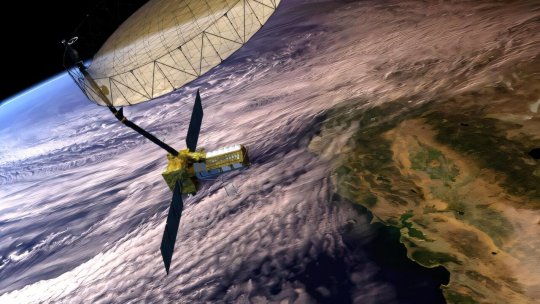
3 notes
·
View notes
Text
U.S. Smart Meters Market Set for Rapid Growth Amid Rising Energy Efficiency Initiatives
Introduction The U.S. smart meters market is experiencing significant expansion, driven by increasing demand for energy efficiency, grid modernization, and government initiatives supporting smart grid development. With a growing emphasis on reducing energy consumption and integrating renewable energy sources, smart meters are becoming a crucial component of the country’s power…
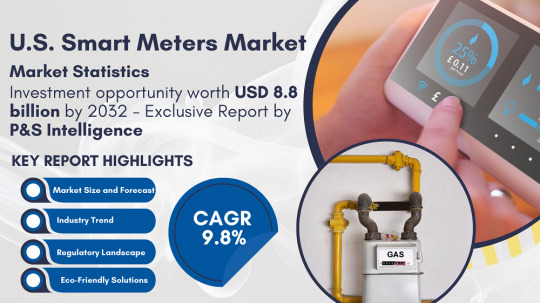
View On WordPress
#advanced metering infrastructure#energy efficiency#real-time energy monitoring#smart grid technology#U.S. smart meters market#utility management
0 notes
Text
Genus Power is at the forefront of reshaping energy management by integrating advanced technologies into traditional power grids. Through innovative smart grid solutions and advanced metering systems, the company empowers utilities to optimize efficiency, enhance reliability, and reduce costs, while enabling consumers to take control of their energy usage.
0 notes
Text
Dholera SIR: India’s Next Industrial Hub with Expressway

In a significant update shared during the Gujarat Assembly, Minister of State Jagdish Vishwakarma confirmed that the 109-km long Ahmedabad-Dholera Expressway, being developed by the Central Government, is set for completion by May 2025. This high-speed corridor is not just a road — it’s a lifeline that will power the region’s economic engine for decades to come.
What sets this expressway apart is its eco-conscious construction strategy. In an innovative move, the project will utilize 35 lakh cubic meters of recycled waste for embankment construction. As a result, 29 acres from Ahmedabad’s massive 80-acre waste dump will be cleared. Additionally, around 173.82 lakh cubic meters of fly ash sourced from various thermal power plants will be repurposed for the build — making this one of the
greenest highway initiatives in the country. Adding to its sustainability goals, a lush green belt is planned on either side of the expressway, covering 97.19 hectares with over 97,000 trees. To protect local wildlife, a dedicated wildlife crossing (4.5m x 7m) will also be constructed, showcasing a perfect balance between infrastructure and ecology.
Designed for speed and scalability, the expressway will initially handle 25,000 vehicles daily, with a top speed of 120 km/h. Future-ready provisions have been made to scale up the four-lane expressway to twelve lanes as traffic demand grows. A cloverleaf interchange, modeled after the one at Adalaj, will enhance local accessibility.
Linking directly to the upcoming Dholera International Airport, a 9.56 km Greenfield link road will be built at an estimated cost of ₹550.49 crore, offering seamless access between the expressway and the airport. Zooming out to the broader vision, the minister detailed developments in the Dholera Special Investment Region (SIR) — a world-class Greenfield Industrial Smart City being developed across 920 sq. km in Ahmedabad district. In its first phase, development activities are focused on 153 sq. km, and the momentum is already visible.
Several marquee industries have already set up shop in Dholera:
ReNew Power has launched a solar cell and module manufacturing plant.
Tata Power has commissioned a 300 MW solar project.
Polycab is building an advanced electronics manufacturing unit.
Tata Semiconductor Manufacturing Pvt. Ltd. is spearheading India’s first commercial semiconductor fabrication facility right here.
Looking ahead, Dholera SIR is expected to create over 8 lakh jobs, positioning it as one of the largest industrial employment hubs in the nation. To support this massive industrial ecosystem, the government is working on key connectivity projects including:
A freight rail link from Bhimnath to Dholera SIR
The Ahmedabad-Dholera Expressway
The upcoming Ahmedabad-Dholera Metro Rail
And a dedicated freight corridor to streamline cargo movement
With world-class infrastructure, sustainable practices, and powerhouse industries anchoring its growth, Dholera…
#dholera sir#dholera smart city#dholera smart city project#plots in dholera sir#dholera smart city plot booking#dholera sir investment#rudraksha smart homes#writers#real estate#tumblr
2 notes
·
View notes
Text
Advanced metering infrastructure (AMI) is a communication architecture that allows a smart utility meter with an IP address to communicate with a utility provider in an automatic, two-way manner. AMI is seen as an important part of any smart grid initiative. The goal of an AMI is to offer utility companies with real-time data about power consumption and allow customers to make informed choices about energy usage based on the price at the time of use.
0 notes
Text
Smart Water Meter Market Analysis by Trends, Size, Share, Growth Opportunities, and Emerging Technologies

Traditionally, water meters are challenging to read and not accurate. People are not very comfortable with a meter reader entering their property for getting a reading. Modern smart meters offer a variety of benefits for customers. Smart meters are part of the IoT, and they transmit data through wireless networks and the internet directly to the provider. This blog will help you understand the fact that, it is always better to switch to a smart water meter.
Better Accuracy than Traditional Meters
Smart water meters have more accuracy than their traditional counterparts. This decreases water loss and helps guarantees that customers are paying for the water used, no more or less. This can bring about significant savings for the municipality, without producing higher bills for any customer. Most glitches in accuracy are small, but when they expand across consumers, this can bring about significant loss.
Browse detailed report - Smart Water Meter Market Analysis and Demand Forecast Report
Analyzing the Data Better
With the analysis of the data from smart meters, it is possible to keep a track of water usage accurately. This can be used for informing about the efforts of conservation and also to demonstrate how water infra is being used. If one is aware of how much water is used at a time, it can be useful for the planning for the future.
Remote Shutting Off for Non-Payment
If a water meter has to be shut off for non-payment remotely, this can be done with the help of smart water meters. There is no need for a person to do this dangerous task, when they need to shut the meter off. It can also be remotely turned on, letting faster restoration of service.
With a lot of benefits associated with smart water meters, the demand for the same will rise considerably in the future, and the total demand will reach USD 15.63 billion by 2030.
0 notes
Text
Analog vs. Digital Meters: Understanding the Differences and Applications

In today’s increasingly connected and technologically advanced world, precise electrical measurement is critical for efficient power management and system monitoring. Two primary tools dominate the field of electrical measurement: analog meters and digital meters. While both serve the same fundamental purpose — measuring electrical quantities like voltage, current, and frequency — their technology, design, readability, and application differ significantly.
This article explores the key differences between analog and digital meters, their respective advantages, disadvantages, and common use cases to help you make an informed decision when selecting the right meter for your needs.
What Are Analog Meters?
Analog meters are traditional instruments that display measurement readings through a mechanical needle moving over a graduated scale. They have been widely used for decades in industries, commercial applications, and even residential setups.
Key Features of Analog Meters:
· Use of moving coil or iron vane mechanisms
· Continuous scale display
· Passive operation (no power required in many types)
· Simple, durable construction
Common Types:
· Analog Voltmeters
· Analog Ammeters
· Analog Frequency Meters
· Analog Power Factor Meters
Advantages of Analog Meters:
· Easy to interpret trends and fluctuations
· Cost-effective for basic applications
· Operate without auxiliary power
· Better tolerance to transient spikes and overloads
Limitations:
· Lower accuracy compared to digital meters
· Manual reading required
· Parallax error due to needle reading
· Limited data logging or interfacing capabilities
What Are Digital Meters?
Digital meters represent a more modern approach to electrical measurement. These devices convert analog signals into digital values, displaying results on an LCD or LED screen. They are widely used in automation, smart grids, and precision engineering environments.
Key Features of Digital Meters:
· High-resolution digital display
· Advanced microprocessor control
· MODBUS communication (RS-485 interface)
· Programmable settings and alarms
Common Types:
· Digital Voltmeters
· Digital Ammeters
· Digital Frequency Meters
· Digital Multifunction Meters (VAF, kWh, Power Factor, etc.)
Advantages of Digital Meters:
· High accuracy and readability
· Remote monitoring capabilities
· Compact and modern design
· Enhanced functionalities like data logging, alarms, and networking
Limitations:
· Higher initial cost
· Requires auxiliary power
· More complex installation in some cases

Applications of Analog and Digital Meters
Where Analog Meters Excel:
· Educational institutions for teaching fundamentals
· Industrial environments where ruggedness is key
· Backup or emergency systems where power is limited
· Low-budget installations
Where Digital Meters Lead:
· Smart panels and industrial automation
· Energy monitoring systems
· Commercial buildings and infrastructure
· Remote power distribution networks
Choosing the Right Meter: Factors to Consider
When deciding between analog and digital meters, consider the following:
1. Accuracy Requirements — For precision tasks, digital meters are the preferred choice.
2. Budget Constraints — Analog meters offer a cost-effective solution for basic needs.
3. Environment — Analog meters can be more tolerant in high-temperature or high-vibration areas.
4. Communication Needs — If integration with SCADA or monitoring systems is needed, go digital.
5. Data Analysis — For trend tracking and analytics, digital meters with memory and communication ports are ideal.
Enza Electric: Your Trusted Source for Analog and Digital Meters in the UAE
At Enza Electric, we provide a comprehensive range of analog and digital panel meters tailored to meet diverse electrical monitoring needs. Our digital meters support RS-485 MODBUS, enabling seamless integration into modern automation systems. Whether you’re looking for reliable analog meters for legacy systems or advanced digital meters for new installations, Enza Electric has the expertise and inventory to deliver.
We offer:
· Voltmeter, Ammeter, and Frequency meters in both analog and digital forms
· Multifunction VAF meters
· Panel meter sizes: 72x72mm and 96x96mm
· Customizable CT and PT ratios
Conclusion
Both analog and digital meters play important roles in today’s electrical systems. While analog meters offer simplicity and durability, digital meters bring precision, connectivity, and intelligence. Understanding their differences and applications is key to choosing the right tool for your project.
For expert guidance and high-quality meters, contact Enza Electric — one of the leading electrical measurement solution providers in the UAE.
#AnalogMeters#DigitalMeters#PanelMeters#ElectricalMeasurement#PowerMonitoring#ElectricalEngineering#EnergyMeters#IndustrialAutomation#MeteringSolutions#Instrumentation#electrical#switchgear#dubai#low voltage#uae
4 notes
·
View notes